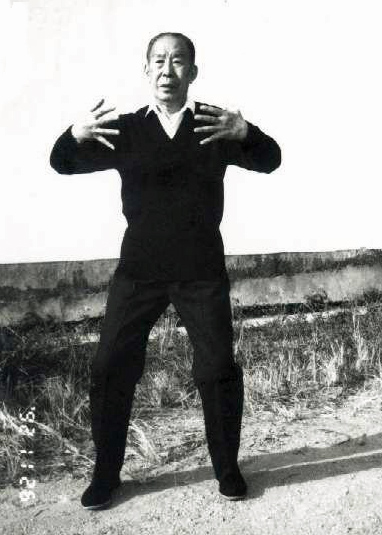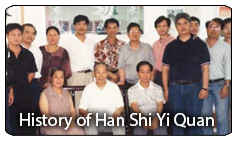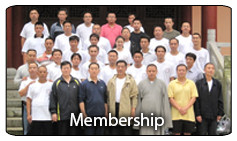The art of Han Shi Yi Quan
For instruction purposes, the practice of Han Shi Yi Quan is broken down into three parts:
- Zhuan Zhuang Meditation
- Yang Sheng Health System
- Han Shi Yi Quan Martial
All three are part of Han Shi Yi Quan, with different emphasis on the intensity of specific conditions for each. For example, Han Shi Yi Quan martial involves the greatest intensity of the condensation principle, while the Yang Sheng Health System involves condensation, but with far less intensity.
Yang Sheng Health System has four distinct parts: 
Zhuan Zhuang or pile/post standing may involve several different postures of moving and stillness. The Wu is explored and experienced
16 exercises in a fixed dynamic state where the practitioner changes from posture to posture while developing awareness of the conditions and feeling
4 walking exercises involving the whole body and same principles of conditions, awareness, and feeling
8 forces or walking postures with awareness of complete connections of body, condition, and feeling
Zhuan Zhuang Meditation:
This is a common meditation form associated with martial arts that is often misunderstood and incorrectly practiced. Zhuan Zhuang or pile/post standing may involve different postures while experiencing and exploring simultaneous movement and stillness. The truth of the Wu with the phenomena of Yo is observed while experiencing the unity of mind and body….essentially no separation…no thought.
 Han Shi Yi Quan Martial:
Han Shi Yi Quan Martial:
Han Shi Yi Quan is a "natural" martial art, meaning that there are neither forms nor techniques designed to achieve preconceived results. In Chinese culture, martial arts are referred to as “boxing." In the boxing martial arts, man has created techniques, form, and concepts such as internal and external, hard and soft.
By contrast, Han Shi Yi Quan seeks and references the natural state and ability as reflected in this saying:
We do not practice boxing. We practice and boxing appears.
Han Shi Yi Quan reflects Wang Xiang Zhai's Yi Quan in principle, varying only in the way conditions are described. As in Wang Xiang Zhai's Yi Quan, there is no practice of touching, pushing hands, or Fa Li, as these exemplify action toward a preconceived result.
In Han Shi Yi Quan, we focus on natural form and training through a series of exercises combined with the ability to remain in a ready state while collecting the conditions that results in a phenomenon—or when the Yo becomes tangible and appears from the Wu, which then becomes intangible. We practice these exercises in the conditions using Shi Li or testing ability of the hands and Shi Li of the legs or Macabu.


